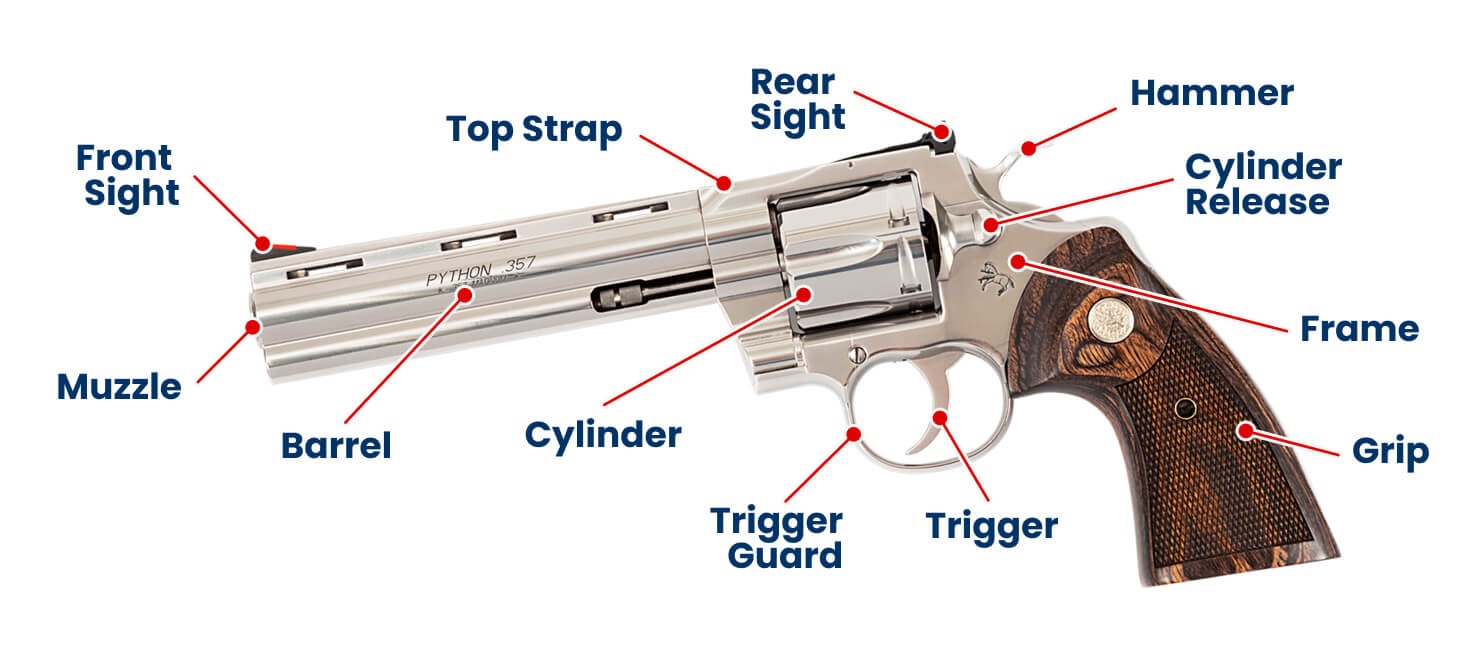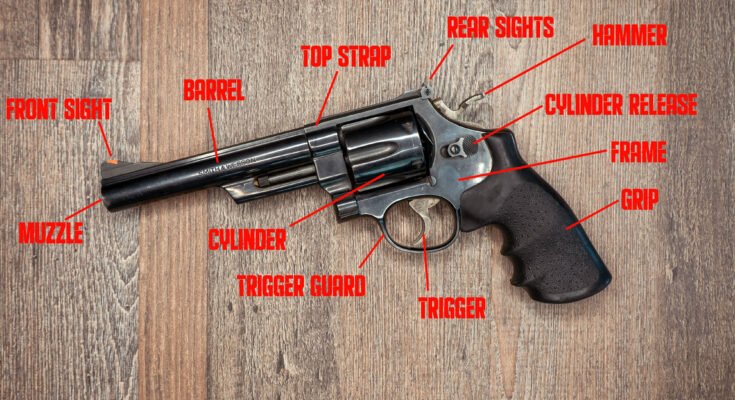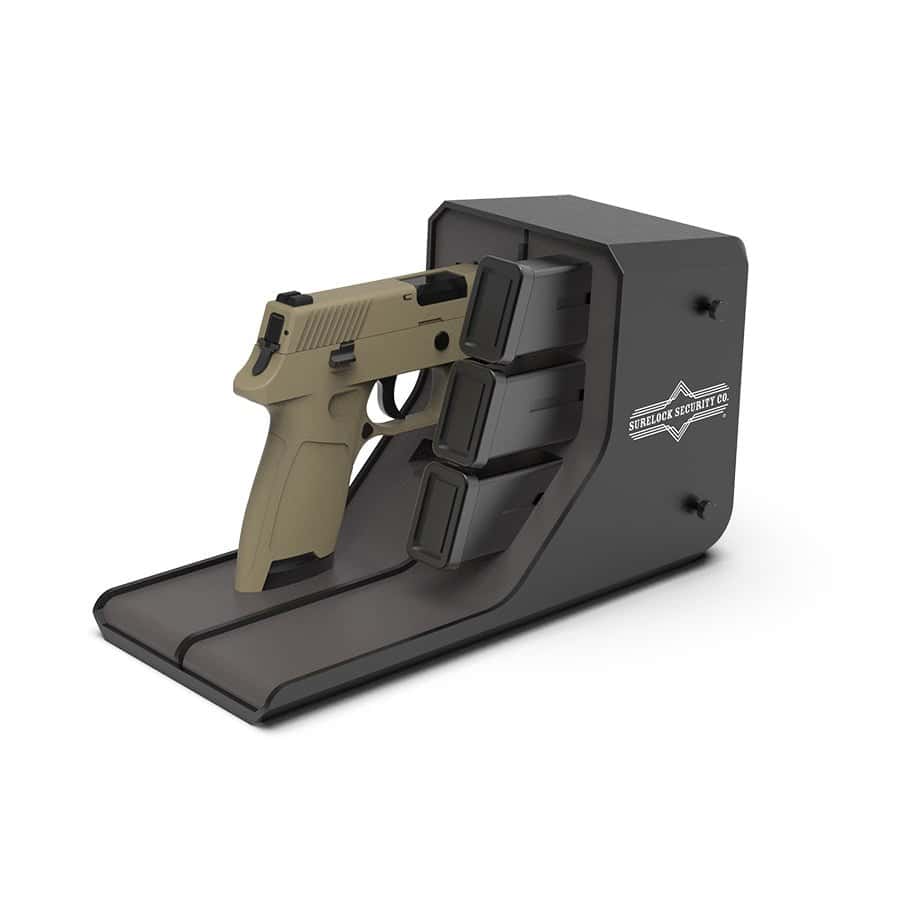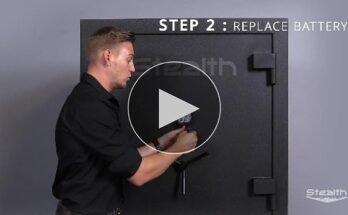Understanding the parts of a revolver can feel like uncovering a mystery. Whether you’re a firearms enthusiast or a curious beginner, knowing the components of a revolver is crucial.
Imagine holding a piece of history in your hands, knowing exactly how it functions. This isn’t just about learning; it’s about gaining confidence and insight. Picture yourself at a shooting range, effortlessly explaining each part to your friends. Wouldn’t that feel empowering?
By the end of this article, you’ll have a clear understanding of each part of a revolver and its role. Get ready to boost your knowledge and impress others with what you learn!

Revolver Frame
The revolver frame is the backbone of the firearm. It houses the cylinder and connects other parts. Its construction affects durability and performance. Understanding frame types helps in choosing the right revolver.
Material Choices
Revolver frames come in various materials. Steel is common for its strength and durability. Aluminum offers a lighter option for easy handling. Titanium provides durability without extra weight. Each material affects the revolver’s weight and feel.
Design Variations
Revolver frames have different designs. Traditional designs feature solid frames for added strength. Open-top frames allow easier access for maintenance. Rounded frames offer a comfortable grip. Design impacts usability and comfort.
Cylinder Functionality
The cylinder is a crucial part of a revolver. It holds the bullets and rotates to align each chamber with the barrel. This rotation allows for continuous firing without reloading. Understanding cylinder functionality is essential for safe and effective use. Each component plays a vital role in the operation.
Loading Mechanism
The loading mechanism involves inserting bullets into the chambers. This is done through a gate or by swinging out the cylinder. The design ensures quick and easy reloading. Precision in loading is important for smooth firing. It prevents jams and misfires.
Locking System
The locking system secures the cylinder in place. It ensures alignment with the barrel during firing. This system prevents accidental rotation. Stability is key for accuracy and safety. A well-functioning lock reduces the risk of mishaps.
Barrel Specifications
The revolver barrel is crucial for accuracy and performance. It guides the bullet. Its specifications can vary greatly. This affects both handling and shooting precision. Understanding these variations helps gun enthusiasts make informed choices.
Length Variations
Barrel length impacts a revolver’s balance and accuracy. Short barrels are lighter. They’re easier to carry. Long barrels offer greater accuracy. They provide higher velocity. Most revolvers have lengths ranging from 2 to 8 inches. Choose based on your needs.
Rifling Patterns
Rifling consists of grooves inside the barrel. These grooves spin the bullet. Spinning stabilizes the bullet’s flight. Different patterns exist. Some have more grooves. Others have fewer. Each pattern affects the bullet’s path. Selecting the right pattern is key for precision.

Trigger Mechanism
The trigger mechanism in a revolver is crucial for its operation. It controls the firing process and affects the shooter’s experience. Understanding this mechanism aids in safe and effective use.
Single Vs Double Action
Revolvers feature single or double action triggers. Single action requires manual cocking of the hammer. Pulling the trigger then releases the hammer. This action results in a lighter trigger pull. It’s ideal for precision shooting.
Double action performs cocking and firing with one trigger pull. This requires more force but is faster. Double action is suitable for quick situations. Knowing the difference helps in choosing the right revolver.
Safety Features
Safety features in revolvers protect against accidental discharge. Some revolvers have a transfer bar safety. This prevents the hammer from striking the firing pin unless the trigger is pulled.
Others have a hammer block safety. This feature blocks the hammer until the trigger is fully depressed. Understanding these features ensures safe handling.
Proper safety knowledge is essential for all revolver users.
Hammer Dynamics
Understanding the dynamics of a revolver’s hammer is essential for shooters. The hammer plays a crucial role in firing a revolver. It strikes the firing pin, igniting the cartridge. The design and type of hammer affect shooting performance. Let’s explore the nuances of hammer dynamics in revolvers.
Exposed Vs Concealed
The hammer can be either exposed or concealed. An exposed hammer is visible at the back of the revolver. It allows manual cocking for single-action firing. This design provides a lighter trigger pull. Concealed hammers are hidden within the revolver’s frame. They are common in snub-nose revolvers. This design prevents snagging on clothing during a draw. Each type serves different shooting needs.
Impact On Shooting
The hammer type affects the revolver’s shooting style. Exposed hammers offer precise shooting with a lighter trigger pull. They are ideal for target shooting and hunting. Concealed hammers excel in self-defense scenarios. They allow quick, snag-free draws. Choosing the right hammer type enhances shooting efficiency. Consider your shooting purpose when selecting a revolver.
Grip Design
The grip design of a revolver plays a crucial role. It affects handling and comfort during use. A well-designed grip ensures better control. It also reduces the impact felt when firing. Understanding grip design is essential for choosing the right revolver. Let’s explore the materials and ergonomics involved.
Material Options
Revolver grips come in various materials. Wood is a classic choice for many enthusiasts. It provides a traditional look and feel. Rubber grips offer enhanced comfort and grip stability. They absorb recoil effectively. Polymer grips are durable and lightweight. They resist damage from moisture and chemicals. Each material impacts the revolver’s feel and performance.
Ergonomic Considerations
Ergonomics ensure the grip fits comfortably in your hand. A well-shaped grip reduces fatigue during prolonged use. Finger grooves can improve control and precision. Grip texture also matters. A textured grip prevents slipping during firing. The grip size should match the user’s hand size. This ensures optimal control and comfort.
Sights And Accuracy
Revolvers are known for their reliability and simplicity. A key component affecting their performance is the sight system. Good sights enhance accuracy, helping shooters hit their target with precision. Understanding how sights work can improve shooting skills and overall experience.
Fixed Vs Adjustable
Revolvers often come with fixed or adjustable sights. Fixed sights are sturdy and less likely to shift. They are perfect for those who prefer simplicity and durability. Adjustable sights offer flexibility and can be fine-tuned for better accuracy. They allow customization for different shooting conditions or preferences.
Sight Alignment
Proper sight alignment is crucial for accurate shooting. It involves aligning the front and rear sights correctly. The front sight should be centered in the rear sight notch. Maintaining this alignment ensures that shots hit the intended target. Practicing sight alignment can improve shooting precision significantly.
Ejection System
The ejection system in a revolver is a crucial component. It ensures spent cartridges are removed after firing. Understanding the ejection system can enhance your knowledge of revolvers. This system can be manual or automatic. Both have unique mechanisms and benefits. Let’s explore these two types of ejection systems.
Manual Ejection
Manual ejection requires user action to remove spent cartridges. Users press a rod or lever to eject casings. This method offers simplicity and reliability. Many revolvers use this system for its straightforward design. It allows users to control the ejection process fully. This can be important in maintaining the revolver’s performance. Manual ejection is also easy to maintain and repair.
Automatic Ejection
Automatic ejection uses mechanisms to eject casings without manual effort. This system is faster and often more efficient. It is particularly useful in high-pressure situations. Automatic ejection relies on springs or other mechanical aids. These components work together to eject cartridges swiftly. Users find this system in many modern revolvers. It helps in quick reloading and maintaining shooting pace.

Frequently Asked Questions
What Are The Main Parts Of A Revolver?
A revolver typically comprises the barrel, cylinder, frame, grip, and trigger. The barrel directs the bullet when fired. The cylinder holds multiple rounds and rotates to align with the barrel. The frame houses the mechanism, while the grip allows handling.
The trigger initiates firing.
How Does A Revolver Cylinder Work?
The cylinder of a revolver holds ammunition and rotates to align each round with the barrel. It usually contains five to nine chambers. When the trigger is pulled, the cylinder rotates, positioning the next round for firing. This mechanism allows for quick and reliable shooting.
Why Is The Barrel Important In A Revolver?
The barrel is crucial for accuracy and range in a revolver. It guides the bullet’s path, ensuring it hits the target accurately. Longer barrels typically offer greater accuracy and velocity. The rifling inside the barrel stabilizes the bullet’s flight, contributing to consistent and precise shooting.
What Is The Function Of The Revolver Trigger?
The trigger releases the hammer or firing pin, igniting the cartridge and firing the bullet. It plays a vital role in the shooting process. A smooth, responsive trigger enhances shooting accuracy and control. The trigger pull weight affects the ease of firing and overall handling experience.
Conclusion
Understanding revolver parts is crucial for safety and maintenance. Each component plays a vital role. The barrel directs the bullet. The cylinder holds ammunition. The hammer strikes to fire. The grip ensures a firm hold. These parts work together smoothly.
Knowledge of these parts helps in responsible handling. It also aids in troubleshooting issues. Always prioritize safety and proper care. This understanding enhances your revolver experience. Whether for sport or protection, being informed is key. Stay safe and enjoy responsible use.



